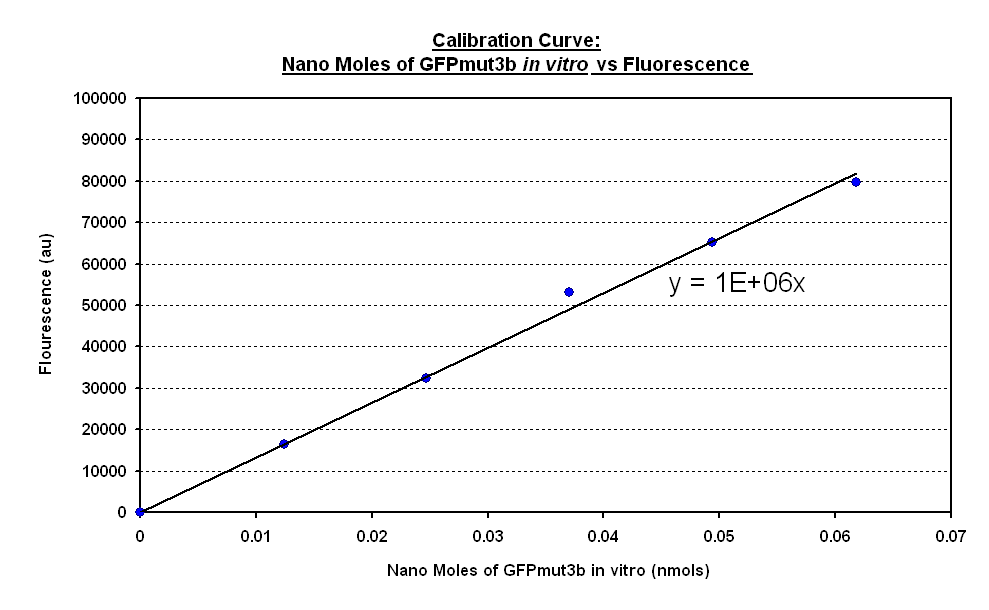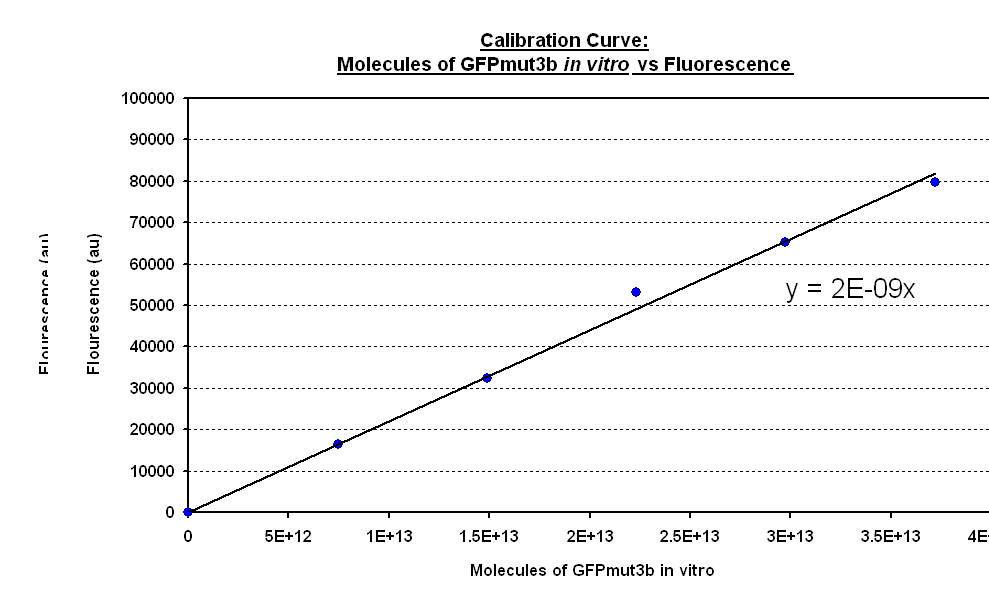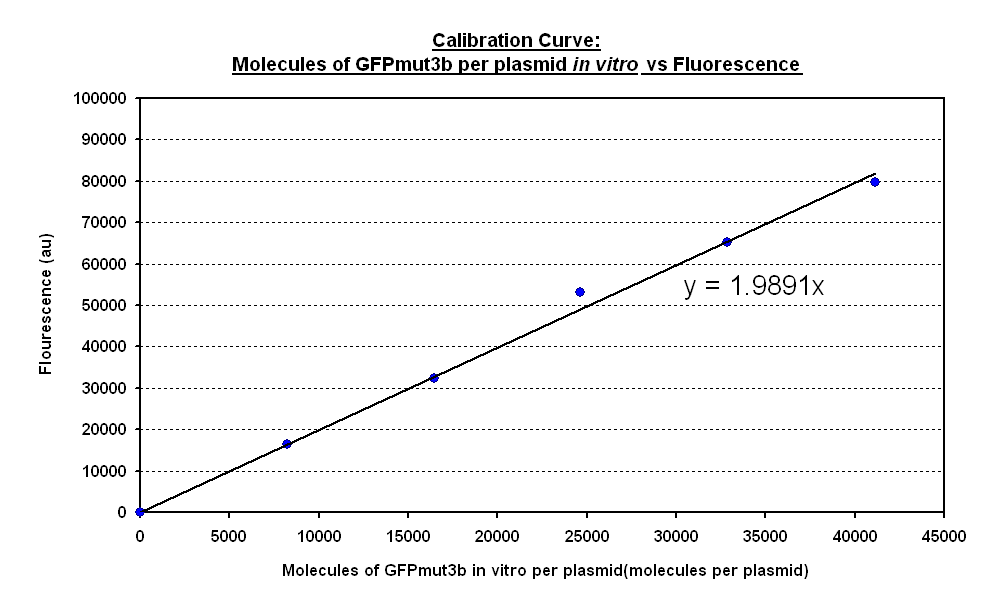Imperial/Wet Lab/Results/Res1.3
From 2007.igem.org
(Difference between revisions)
(→Conclusion) |
(→Conclusion) |
||
| Line 29: | Line 29: | ||
Now that we have a calibration curve in terms of units of fluorescence, it is possible for us to convert the results obtained in terms of fluorescence to molecules produced. This would make the results more generic and thus the transfer function of the constructs can be obtained which is independant of the reporter attached at the end of the construct. | Now that we have a calibration curve in terms of units of fluorescence, it is possible for us to convert the results obtained in terms of fluorescence to molecules produced. This would make the results more generic and thus the transfer function of the constructs can be obtained which is independant of the reporter attached at the end of the construct. | ||
| - | <br>The conversion from one unit to another can be done using this [[Imperial/Wet Lab/Results/Res1.3/Converting Units|conversion method]] | + | <br>The conversion from one unit to another can be done using this [[Imperial/Wet Lab/Results/Res1.3/Converting Units|conversion method]]. |
Revision as of 01:43, 27 October 2007

Calibration Curve: GFPmut3b in vitro vs Fluorescence
Aims
To construct a calibration curve of GFPmut3b in the in vitro chassis to enable the conversion of Fluorescence to more useful units.
Materials and Methods
Link to the Protocol
Results
Raw Data
Discussion
The results obtained fit a linear plot very well.
Conclusion
Now that we have a calibration curve in terms of units of fluorescence, it is possible for us to convert the results obtained in terms of fluorescence to molecules produced. This would make the results more generic and thus the transfer function of the constructs can be obtained which is independant of the reporter attached at the end of the construct.
The conversion from one unit to another can be done using this conversion method.



